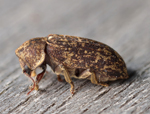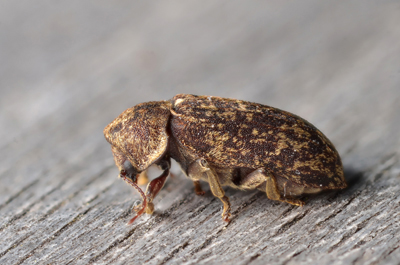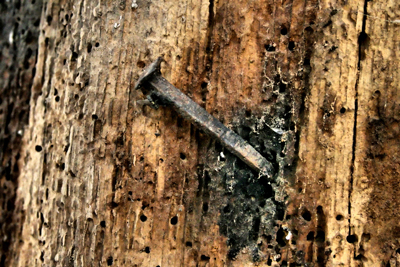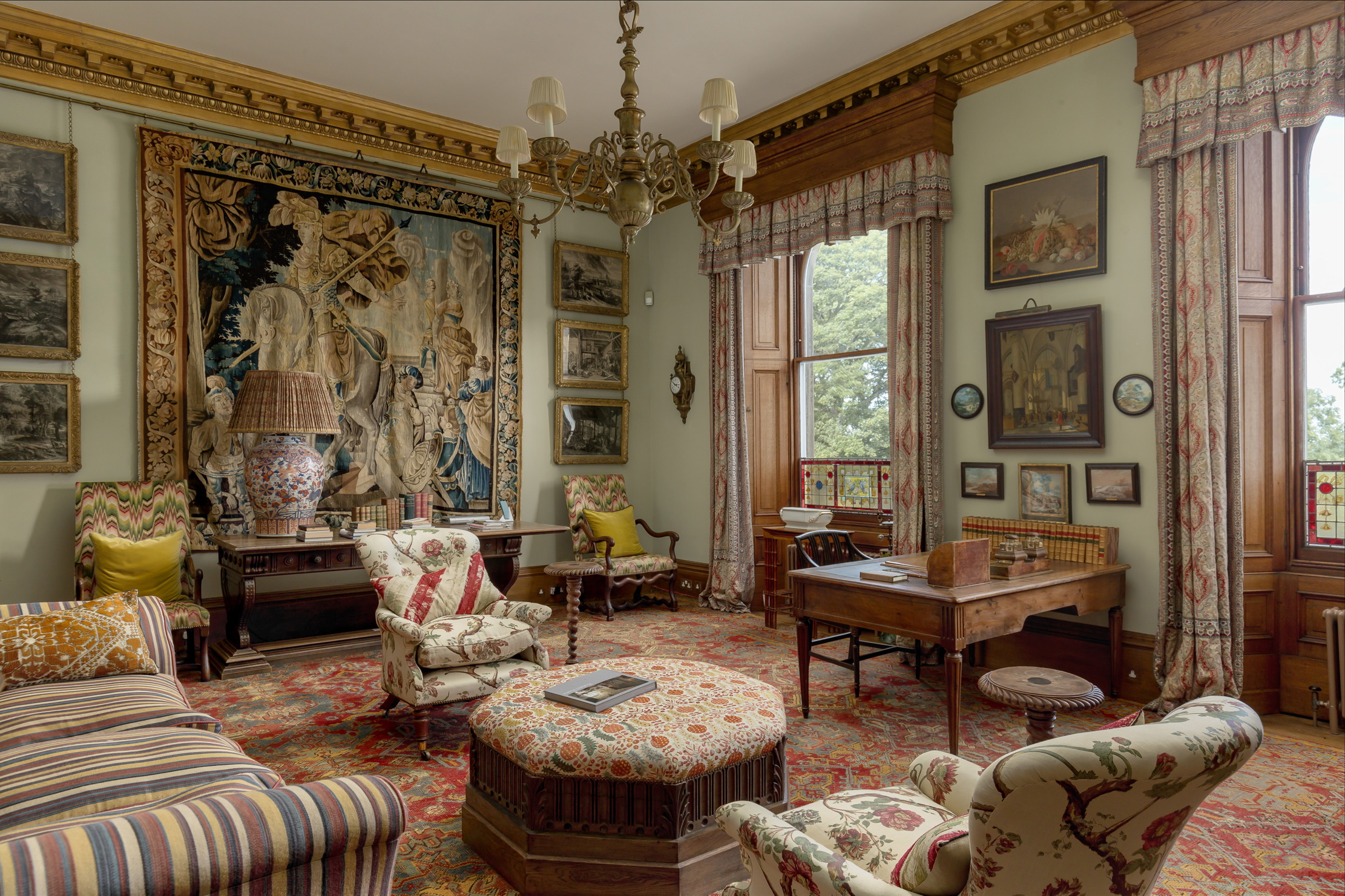Should we fear the deathwatch beetle?
Expert Tim Floyd bebunks some myths about the deathwatch beetle in the first of a series on pests in historic houses


The sound or appearance of UK deathwatch beetles (Xestobium rufovillosum) seems able to instill an unjustified level of fear in building owners.
The name, almost certainly a contributory factor in this fear, probably derives from past outbreaks of plague, when an increase in audible insect noise would coincide with flea activity and consequent increased sickness levels. Both carers (with heightened senses) and afflicted (in initial stages tired but unable to sleep) would presumably have been subjected to watch-like ticking against a silent night while they contemplated heaven or hell.
This nightmare scenario was enhanced by various commentators and writers, not least Edgar Allan Poe, where, in the ‘Tell Tale Heart', a sound, assumed by the protagonist to be the beating of his dismembered victim's heart below the floor, is thought by some to be a lesser deathwatch beetle in the wall.

John E Reilly wrote a fantastic article, printed in 1969 on the use of the deathwatch tag in literature - principally by Poe (the subject of the article) - but also by others including Addison and Thoreau whose work predates that of Poe - and by Keats, a contemporary of Poes'.
The only trouble, John E Reilly points out, is that the UK deathwatch doesn't sound like a ticking watch. The tag ‘deathwatch' has, rather unhelpfully, been attributed to more than one species of insect which produce noise audible to the human ear.
It is probable the death watches of past literary note, do not in fact refer to the wood borer Xestobium rufovillosum (the beetle associated with damage to hardwoods in buildings), but to the book lice, a species of the order Psocoptera that doesn't feed on wood. The (very) prolonged and much quieter metronomic ticking produced by this species of lice would have been much more likely to sound like the Reaper's watch than the off-time grouped taps (of 6 - 8) produced by the deathwatch beetle.
The deathwatch beetle at issue here is one of only two (both being anobiids, the other being furniture beetle or woodworm - Anobium punctatum) able to cause structural problems.
Sign up for the Country Life Newsletter
Exquisite houses, the beauty of Nature, and how to get the most from your life, straight to your inbox.
If the building has been reasonably well maintained, damage is likely to be historic, with only outer sapwood edges and exposed beam ends affected locally. It is also important to appreciate timing and event sequence with these anobiids, where an emerging adult would have been laid as an egg 5 to 10 years previously (approximately half this in the case of furniture beetle).
Identification and Treatment
Deathwatch beetles create small neat holes about 3mm in diameter, which have sharp clean edges and traces of bore dust may be observed in or around the hole. Damage to building timbers caused by the deathwatch beetle is associated principally with oak and elm (more rarely in softwood).
Most of the damage seen will be historic and superficial, limited to the outer sapwood margins and almost certainly caused when the timber was green. This rarely requires treatment. As decay in oak and elm is generally slow, numbers of emerging adults rarely constitute a healthy population and as such knee jerk reaction to the appearance of deathwatch is not appropriate.

Current activity seen in historic timber indicates the timber is getting wet and decaying locally. In the right conditions, an infestation of deathwatch beetle is possible and a specialist consultant should be engaged to carry out an assessment. They will be able to advise of any structural concerns along with recommendations which may include structural repairs, monitoring and/or an appropriate treatment method.
Tim Floyd is a conservation scientist and chartered surveyor who specialises in structural assessment and the bio deterioration of historic timber. Call 01562 885806 or visit www.floydconsult.co.uk.

This is an article from ProjectBook which provides a wide range of information for the conservation, restoration, care and repair of period and listed buildings.
Established in 2008, Projectbook provides recognition and support for the UK's leading conservation and heritage professionals as well as putting property owners in touch with the right people and information.
Tim Floyd is a member of the Heritage Register which contains over 500 conservation approved craftsmen, contractors and consultants from all over the UK. Updated daily with new content, the website features the Heritage Register, a products directory, informative articles, current news, events around the UK and more. For more information, visit www.projectbook.co.uk Images: Deathwatch beetle Leo Reynolds Death Watch beetle evidence: Gilles San Martin
Country Life is unlike any other magazine: the only glossy weekly on the newsstand and the only magazine that has been guest-edited by HRH The King not once, but twice. It is a celebration of modern rural life and all its diverse joys and pleasures — that was first published in Queen Victoria's Diamond Jubilee year. Our eclectic mixture of witty and informative content — from the most up-to-date property news and commentary and a coveted glimpse inside some of the UK's best houses and gardens, to gardening, the arts and interior design, written by experts in their field — still cannot be found in print or online, anywhere else.
-
 The finest interiors in Edinburgh? A seven-bedroom townhouse furnished by Robert Kime comes to market
The finest interiors in Edinburgh? A seven-bedroom townhouse furnished by Robert Kime comes to marketSituated on one of the New Town's grandest terraces, this four-storey property is a collector's dream.
By James Fisher Published
-
 Why LOEWE decided to reimagine the teapot, 25 great designs over
Why LOEWE decided to reimagine the teapot, 25 great designs overLoewe has commissioned 25 world-leading artists to design a teapot, in time for Salone del Mobile.
By Amie Elizabeth White Published
